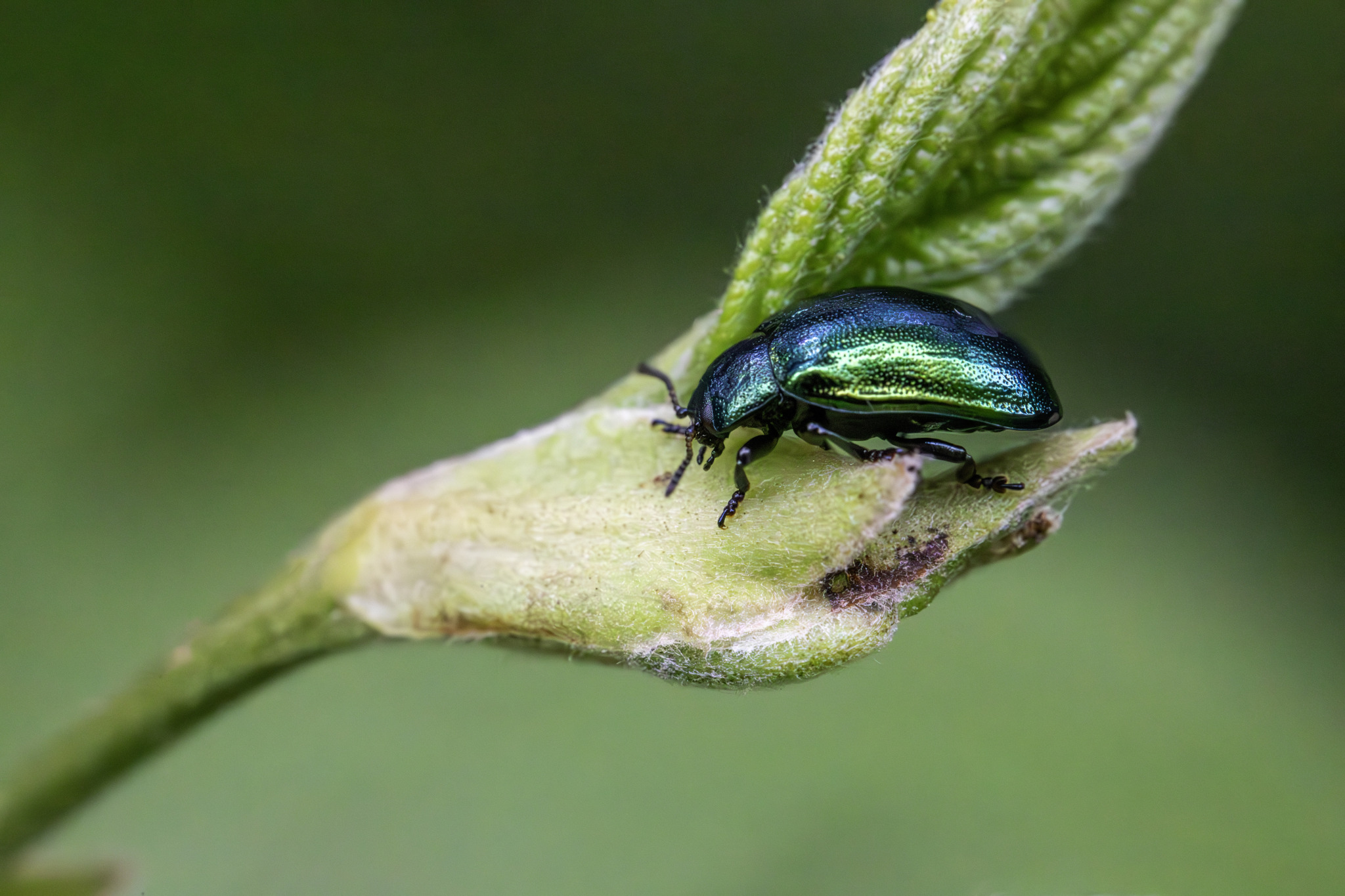The Leaf Beetle (Plagiosterna aenea) is a small, metallic beetle belonging to the family Chrysomelidae. Known for its lustrous appearance and herbivorous habits, this beetle plays a significant role in its ecosystem, though it can sometimes be considered a pest due to its feeding on various plant species.
Physical Description
- Size:
- Length: 5–7 mm.
- Coloration:
- Adults have a shiny, metallic exoskeleton that ranges from green to bronze, often with iridescent hues.
- Legs and antennae are typically dark, complementing the metallic body.
- Shape:
- Oval and slightly convex body, characteristic of leaf beetles.
Behavior
- Feeding:
- Adults and larvae feed on leaves, often creating holes or notches along the edges.
- Prefers plants in the willow (Salix) and birch (Betula) families.
- Activity:
- Most active during warm months, especially in spring and summer.
- Adults are strong fliers and can disperse widely to find suitable host plants.
- Reproduction:
- Females lay eggs on the underside of leaves, ensuring larvae have immediate access to food upon hatching.
Habitat
- Found in a variety of habitats, including:
- Woodlands and forest edges.
- Meadows with an abundance of host plants.
- Gardens and parks.
Life Cycle
- Eggs:
- Small, yellowish eggs are laid in clusters on the underside of host plant leaves.
- Larvae:
- Dark, soft-bodied larvae feed voraciously on leaves, often skeletonizing them.
- Go through several molts before pupating.
- Pupae:
- Pupation occurs in the soil or leaf litter.
- Adults:
- Emerge in spring, mate, and continue the cycle.
Distribution
- Widely distributed across Europe, including northern regions, and into parts of Asia.
- Prefers temperate climates but is adaptable to various environments.
Conservation Status
- Classified as Least Concern, with stable populations.
- Occasionally subject to local control efforts if populations impact agricultural or ornamental plants.
Ecological Role
- Herbivore:
- Contributes to the regulation of plant populations, particularly willows and birches.
- Prey Species:
- Serves as a food source for birds, spiders, and predatory insects.
Interesting Facts
- Metallic Sheen:
- The iridescence of its exoskeleton is due to microscopic structures that refract light, not pigmentation.
- Host Plant Preference:
- While it favors willow and birch, it can adapt to other plants if necessary, showcasing its resilience.
- Defensive Behavior:
- Emits a mild odor or liquid when threatened, deterring predators.
Summary
The Leaf Beetle (Plagiosterna aenea) is a striking and ecologically significant insect. Its metallic beauty and feeding habits make it an interesting subject for study, while its role in the food web highlights its importance. Proper management of its habitats ensures a balanced coexistence with this fascinating beetle.
Visited 781 times, 1 visit(s) today
Views: 1187
Subscribe to the newsletter:
